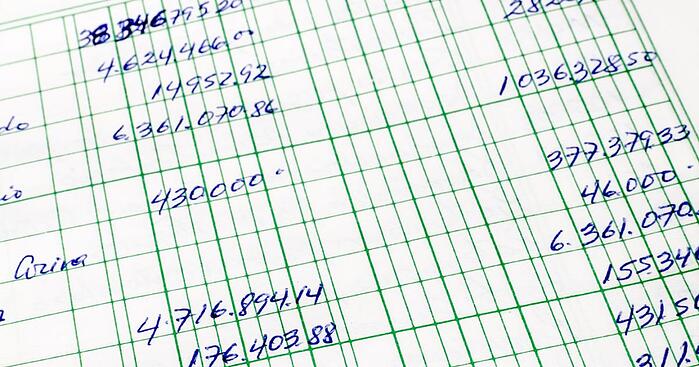As the end of the year approaches, many business owners are turning their thoughts to strategy and goals for next year. Along with those discussions comes a deep dive into the budget. In some companies, budgeting means copying and pasting from the prior year’s budget, adding a 4% increase across the board, and then adjusting the numbers as you go through the year.
While there is a certain element of art involved in creating a budget, this is one area of your business where you should be doing a rigorous analysis of your past data and using it to predict future needs. Even small businesses have a wealth of information about sales, spending, and upcoming expenses that can be incredibly helpful in creating a more precise and useful budget for the year ahead. We’ve broken the budgeting process down into five steps to creating a more accurate budget that will help you grow your business.
Step 1: Make sure the current year’s data is accurate and reconciled
You’ve probably heard the expression “garbage in, garbage out.” If your books are a mess, you aren’t ready to create next year’s budget. You really should be locking down your books every month, but we know that doesn’t always happen in reality. Get the current year cleaned up and reconciled first and foremost, and consider whether your current accounting practices are still appropriate for the size and complexity of your business. Guess what: your accountant will be thrilled with you come tax time!
Step 2: Review your monthly P&L
Do you see why your books needed to be squared away? We’re going to take a deep dive into your spending to see what’s essential for the coming year. You’re not quite ready to start forecasting new expenses at this point—for now, go month by month to see which expenses hit when. Sure, your rent and utilities are relatively the same each month, but other months will vary based on business cycles. Creating a monthly list of expenses based on your P&L, as opposed to your budget, will give you a much more accurate representation of what actually happened in your business finances.
Step 3: Use your spending trends by month to create a forecast for the next year
Now you’re ready to predict your future spending. First, look at any recurring expenses that were added partway through the past year. For example, if you hired a new employee in June, make sure the salary and expenses (taxes, benefits, etc.) tied to that individual are included in every month of the new year. Next, add increases to your recurring expenses. Will your rent go up? Are you going to give your employees raises? How much will benefits costs increase? What about your vendors, suppliers, and service providers? Do you need to add more to your travel budget in order to visit a growing client base and account for the rising costs of gas, food, and airline travel? Will interest rates increase on any of your business loans? This is the time to get granular with every single existing expense in your budget.
Step 4: Create a sales forecast
Now it’s time to step back from your budget and figure out how you’ll earn the income needed to cover all of the expenses listed and (hopefully!) turn a profit. When forecasting sales, we recommend a monthly analysis, as opposed to dividing total sales for the year by 12 equal months. The vast majority of businesses have some element of seasonal fluctuation. If you’re forecasting that sales will increase by 5%, you may not see a 5% increase in every month—big months could have a 10% increase, while slow months may stay flat. Chart out your sales forecast with your budgeted expenses to see how everything lines up.
Step 5: Add in future growth plans
Now that you can view your forecast sales next to your anticipated expenses month by month, it will become clear how much your business can afford to invest in growth. As you think about growing, consider the full picture of costs associated with any new investment. The costs associated with adding employees is one area that many business owners shortchange their budgets. In addition to the salary or hourly wage, your employee will also have costs associated with benefits, taxes, a work space, supplies/equipment, and anything else needed to perform the job—not to mention a plan for getting him or her up to competency and covering the work in the meantime. Planned equipment purchases often lead to similar mistakes. A new vehicle will require gas, maintenance, insurance, and parking fees. A new copier requires paper, toner, and ink. Look at all of the ongoing expenses that surround any new expenditure and ensure those are built into your budget.
Don’t you feel better?
A realistic budget adds so much peace of mind to running a business. Not only do you know what you’ll need to cover when, but it’s also much more straightforward to track how you’re progressing throughout the year. When you need to make adjustments, you’ll know those decisions are grounded in what’s really happening and scheduled to come. If you need help creating a business budget or preparing for year-end, reach out to us. We can help you get your books in order and set you up for a new year of great success.

